Waldorf Education between philanthropy and violence
During the second half of the 20th century education in Colombia experienced an increasing tightening of political and socio-economic conditions. In the 70s and 80s there was a certain social equilibrium. In the 90s until the beginning of the new century, there was increasing polarization, which led to political violence and social decay.
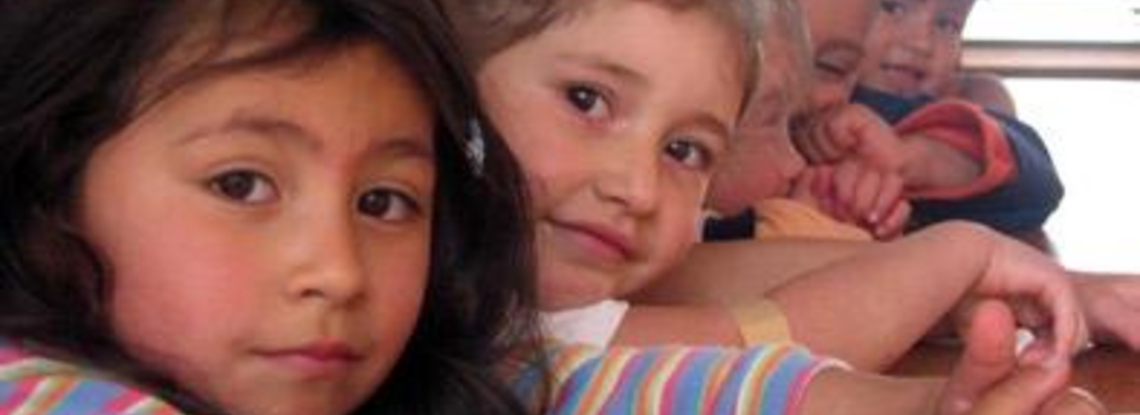
The murder rate is still high in Colombia. Kidnappings are part of daily life. In many villages, the guerrillas operate in such an arbitrary fashion that it has become so dangerous that the people fled to the cities. Thus, the urban habitat is growing explosively. 50 years ago, Bogotá had 300,000 inhabitants; today one can only guess that there must be 8-10 million.
In Colombia, philanthropic entrepreneurs who wanted to do something for a lasting change in their country initiated Waldorf education. One of the successful entrepreneurs, who had worked his way up from the bottom, was Luis Horacio Gomez Escobar. Together with the Spanish psychologist and university professor Andres Sevilla, who knew Waldorf education from Europe, he made the establishment of the first Waldorf school possible.
Cali
The Luis Horacio Gomez Foundation, one of the first charities in Colombia, had set itself the goal to provide Colombian students with foreign scholarships. During the 70s this became impossible because of student unrest. As a result, Luis Horacio Gomez and his wife Olga Arango de Gomez decided to establish an educational center in Cali that would change the usual methods of education. When teachers of the Waldorf school asked Luis Horacio Gomez at the end of his life why he supported the Waldorf impulse at that moment, he replied: “Because I can not stand it when one treats a child badly.”
The translation of Juan Berlin (1913-1987), who back then was the only one who translated Steiner into Spanish, were the only written basis for Waldorf teacher training. Juan Berlin represented connection over which Waldorf teachers from Europe and the United States could participate in the establishment of the Waldorf school in Cali. Further support came from the University of the Franciscan Church in the center of the town, from which came the founding teachers.
In 1977 the first kindergarten opened in Cali, with two groups. In 1979 the school was founded. After a few moves the Luis Horacio Gomez Foundation, gave the school a property and buildings in a rural area outside of town in the immediate vicinity of some of the most famous schools. The school is still at the same location and is fully developed today.
Benedicta zur Nieden (1910-1998) was another person who strongly supported Waldorf education in Colombia. She advised the Waldorf school in Cali, and founded the country’s second Waldorf school in Medellin in 1985. Raised in Germany, she was married to businessman Diego Echev Arria Misas, from Antioka, who up to his death through kidnapping committed his life to art and culture. Initially, the school fees were covered by the Ayuda Foundation zur Niedens. Later on the school established an association and the parents started paying the school fees. In addition to the Waldorf School in Medellin the “Centro Humanistico Micael”, a Waldorf teacher training college developed at around the same time.
Most of the Waldorf parents are members of the middle class and suffer greatly from the economic pressure of the socio-political crisis. Nonetheless, everything is being done to ensure that even children of those families who lost their jobs can continue to attend the Waldorf School.
Since 1998 there exists a parents association at the Waldorf School in Cali, which prevented the departure of a large number of children with a solidarity fund. This is just one example of how the civilian population of Colombia is committed to mutual help. People that are displaced as a result of violence, homeless people, AIDS victims and incurable cancer patients, widows, orphans and disabled people also benefit from such helpfulness.
During the last visit of the Department of Education, the inspectors insisted that the experience made with Waldorf education should be accessible to a greater extent to the population in Cali. With this statement they expressed their appreciation for the educational achievements of the Waldorf School.
So far there have been eight classes that have graduated from the Waldorf School in Cali with a high school diploma. As a result, feedback is being received from former students: “I was able to develop perseverance at the Waldorf school, but I lacked academic knowledge. However I can go to the best bookstore in the city and buy me the best book to study it, but the human lessons, which I received at the Waldorf school is something I can not get out of the books ... “ it is interesting that the parents answer similarly when asked why they sent their child to a Waldorf school.
Medellin
In Guarne, a small town about 60 km away from Medellin, senior Octavio Mejia, a retired teacher, taught four to five children. He was very enthusiastic about integrating Rudolf Steiner education into his work. This news spread among the parents of the city, and soon even more space on the floor of his living room was needed to accommodate all the children who wanted to come to him. After many efforts, the city provided a finca in Guarne that has enough space for the first four grades, and where a kindergarten and a preschool class was established in 1999.
Social Work in Bogotá
Since the beginning of the 90s the project “Extra Muros” exists in Bogota. Social workers take care of some of the thousands of young children living on the street and try to build a relationship with them and to develop future perspectives. The life of these children can be described as follows: "Being Born into the poorest conditions, growing up in an environment where violence is constantly present: physical violence, bloody violence, abusing soul and body, as a result they are alienated to themselves and other people, without self-consciousness. Abandoned with about three years, life in a “Gallada” (gang of children), survival of the fittest. Life of theft and murder, surrounded by indifference, ignorance and lethargy. Life in the here and now, not knowing what will happen tomorrow, maybe there is no tomorrow.”
Since 1997, "Extra Muros" organizes a resettlement project, which began when a slum settlement located next to the railway in Bogotá was to be torn down. With the help of social workers from 'Extra Muros' the authorities were ready after long negotiations to create a housing development at another location for the families who would lose their roof over their head.
Meanwhile, a settlement was built, where each family has a simple apartment. Job creation measures secure the rental payments, while the children can participate in craft classes several times a week. In addition there are drama classes and offerings for homework help and tutoring. By selling homemade items, the families can earn some pocket money. In evening courses parents are informed about hygiene, family planning and health education. “Extra Muros” works with the poorest of the poor in Bogota to open up a perspective on life.
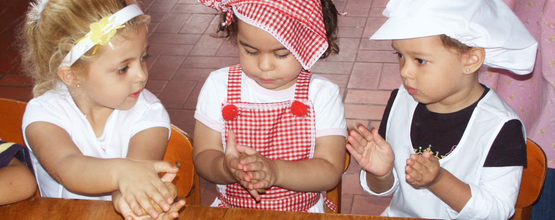
Colombia: CES Waldorf
At the periphery of Bogota, Colombia's capital city, rural refugees seek a new life under the toughest conditions. There CES Waldorf helps with tutoring in reading, writing or mathematics. …
Learn more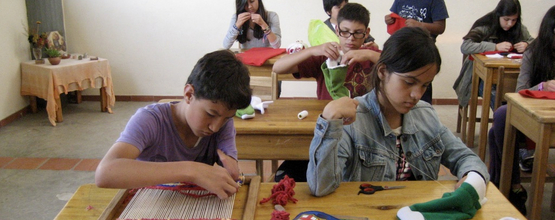
Chia
Colombia: Monte Cervino School was founded in 1997, in the town of Chía, about 30 minutes by car away from Bogotá. It was founded in order to contribute to…
Learn more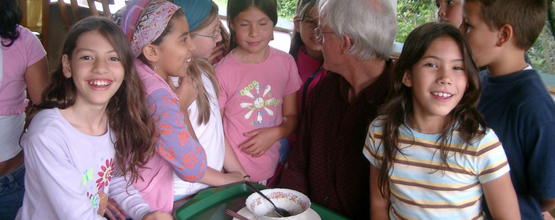
Estrella - Isolda Echavarria
Colombia: This school came into being through the efforts and dedication of Benedicta Zur Nieden de Echavarría (a German lady). In 1983, she gathered the…
Learn more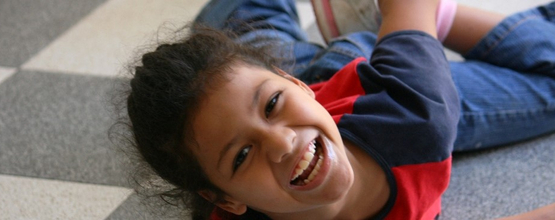
Colombia: Fundación Arca Mundial
In Medellín, people with disabilities aged between 1-28 years have the opportunity to educate themselves and learn skills such as weaving, baking and carpentry.
Learn more